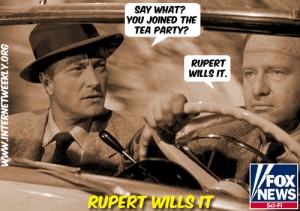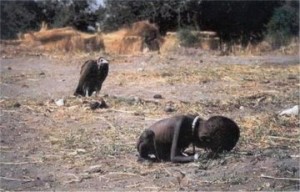The ethical stance and its representation in the expressive techniques of documentary filming: a case study of Tagged Kay Donovan a Centre for Creative Practice and Cultural Economy, Faculty of Arts and Social Sciences, University of Technology , Sydney.
This paper discusses the ethics of documentary film making. The writer, Kay Donovan, uses her own film as an example: the 60 minute documentary Tagged about four young people over three years as they transition into adulthood. Donovan states that ‘we expect a documentary to represent in a fair and honest way somebody’s experience of reality’ and that ‘In doing this, documentarians make judgements about inherent right or wrong, goodness or badness, and they also contribute to our social discourse about what we value in our society and how we deal with it.’) For Donovan, on her making of Tagged, concludes that it was reflexive one, that she took into her account her ethical standards and reflected those in her work with her subjects.
Having made short documentaries, it is all too tempting to make subtle changes of ‘a truth’ of the subject in the filming and editing process. You can portray your subject positively or negatively simply with taking what they’ve said out of context or through gross omissions. Anyway, it’s something to keep in mind when approaching a documentary making project in the future for we assume that if it is this genre then we assume it is documenting reality.
Scott McCloud, 1993, ‘Blood in the Gutter’, Understanding Comics: The Invisible Art (Northampton, MA : Tundra Pub)
Told appropriately in cartoon panels, Blood in the Gutter examines the art of editing. McCloud poses some challenging ideas such as the faith (just because we can’t see something, is it really there?), and closure (observing the parts but perceiving them the whole). He goes to explain action to action, subject to subject, scene to scene, aspect to aspect, deductive reasoning by the view and non-squiturs where the viewer struggles to deduct at all.
What I found most interesting about this was the action or story that happens outside the panel or screen, that we, as a viewer create a story for ourselves that fits with the next panel (or because of it). I also didn’t realize the different forces that are at play in telling a visual story and culturally they can be different (Japanese cartoons).
It’s made me think of our up coming project and how I could use some of the above, particularly non-sequiturs for experimental work.
Jean Tabaka, 2006, ‘What are collaborative teams?’ Collaboration explained: Facilitation skills for software project leaders, Upper Saddle River, NJ : Addison-Wesley, pp.23-43.
‘…a team is a small group of people with complimentary skills who are committed to a common purpose, performance goals, and approach for which they hold themselves mutually accountable.’ (Tabaka).
Tabaka describes different stages of team development from forming (figuring out roles), storming (jockeying for power also known as ‘The Groan Zone’), norming (individuals know their roles) and performing (team can now focus on goals with little conflict). Teams can strengthened/weakened by removing, adding or changing the team purpose and concludes that when people have clarity of their roles and what their supposed to do, groups of people can function highly effectively.
I haven’t heard of these terms before so it was fascinating to see the process of new teams forming, conflict resolution and why teams fail. I often try to get along with people but there is one thing I can’t stand and that is the controlling member in a team that refuses to listen or compromise. I’m not usually the leader and I’m more likely to be a facilitator or an ‘S’ – a reliable player. It’s something to be aware of as we form collaborations soon. It does fill me with some sense of trepidation!
G.Branston & R.Stafford, ‘Approaching Media Texts’ (Ch.1) in The Media Student’s Book. London: Routledge, 2010.
Branston and Stafford focus on the qualitative and quantitative approaches to text and semiotics (The French linguist, Ferdinand de Saussure pioneered semiotics defined as a system of signs that are orginised into the codes or structures) and content analysis. They discuss structuralism or how meaning is constructed by different languages and cultures and signifiers (signs).
This articles ties in well with the lecture and has helped my understanding of semiotics a bit better. In particular, what comes to mind is this image below and the meaning that was attached to it.
We see an African child at the brings of death while a vulture sits in the foreground. This image is powerful because of the power we have assigned to the vulture i.e. symbol of death. So, the appearance of the vulture signifies the inevitable death of the child. Expanding this back to the lecture on ethics and the Gaze, questions were put to the photographer as to why he (Kevin Carter) did not intervene.
McKee, Robert. (1997). ‘The substance of story.’ In Story: Style, Structure, Substance, and the Principles of Screenwriting. New York, USA: HarperCollins, pp. 135-154.
Robert McKee, the famous guru of screenwriting, analyses the elements of the protagonist in story, explaining that they can be willful, be empathetic have conscious desire that maybe self-contradictory, that they must have the capacity to pursue their object of desire and a chance to obtain it and above all, there must be risk. This is the cornerstone, McKee argue, why some stories work and others don’t. He cites the movie Interview with a Vampire as a failure because the audience’s reaction to Brad Pitt’s whining character – they couldn’t feel sympathy for him.
This was a great read because I am currently writing a book and even though I’ve read a lot on protagonists and story development it was good to be reminded of the key characteristics for a successful narrative.
Jay Rosen (2006),’The People Formerly Known as the Audience’, PressThink blog, June 27.
http://archive.pressthink.org/2006/06/27/ppl_frmr.html

Rosen explains the shift in power of Big Media to the audience. Once the audience were passive receivers that had to tolerate high entry prices and accept content of mainstream media. Now, with the advent and uptake of new technologies, the audience can download movies when they like, listen to podcasts, shoot and edit their own movies and be the producer of their own news. No longer does Big Media call the shots. As Rupert Murdoch remarked, ‘They want control over their media, instead of being controlled by it.’ The expansion of authorship and diverse set of opinions finally allowed to run freely.
While agree with the sentiments put forward by Rosen, Big Media still has a big impact. It still shapes and controls the majority of what we consume and I don’t see any of that really changing soon. The function of audience has fractured, but for most of us being a passive receiver is probably all we’ve got time for at the end of the day. Also, how much of the material produced online is reliable? We have seen sites like Information Clearing house and Wikileaks, and they’ve had a huge impact but still. The news of that came through traditional networks.
Joshua Meyrowitz (2009), ‘Medium Theory: An Alternative to the Dominant Paradigm of Media Effects’ in The Sage Handbook of Media Processes and Effects, Ed. R. L Nabi and M. B. Oliver (Sage).
Medium theory is the effect of media on culture, society and communication. Meyrowtiz looks at invention of the printing press and how it under minded the Church and monarchy, and helped secularise society. Even Socrates was fearful of media, expressing his scorn that writing would make people forgetful and people would speak less.
It thought this was thoroughly interesting read because I didn’t know about such effects in the past and makes me wonder for the future. Already we have a mass media affecting the way buy, think, feel about things from the constant barrage of weight loss products to the perception of crime (it’s actually much lower than what we perceive). But also, on a positive note, media has helped change the lives for the better such as the recent changes in attitudes to same sex marriage. It’s permeated rigid thinking of the mainstream.
Benjamin, Walter (1936). ‘The Work of Art in the Age of Mechanical Reproduction’. Available at https://www.marxists.org/reference/subject/philosophy/works/ge/benjamin.htm
Benjamin raises the issue that with the emergence of changing technologies (film, sound) it popularised ideas and spread them around the world. Benjamin considered how reproducing something changes it, that it becomes less authentic.
In a sense, I would agree that something does become less authentic like listening to live recording instead of attending it. That’s why live events are still so popular and that people will pay an exorbitant amount of money to see their favourite bands or actor. Like the Doctor Who event I did my project on, fans paid as much as $850 just to have lunch with the former doctor, Matt Smith. This desire for an authentic experience can’t be close enough for some. Wished I’d read about this before I completed my project. It would’ve added more weight to it.
Murphy, A., & Potts, J. (2002), Culture and Technology. Palgrave MacMillan.
Potts and Murphy set out to define culture and technology and whether we, as a society and culture, dictate technology or does it dictate to us? Both affect our destiny and the way in which we engage with the world.
I’d never thought of technology in this way and its forms. I’ve always taken the view that technology will determine our future, in particular, the militarisation of artificial intelligence. Perhaps we will have a symbiotic relationship where we become part of technology and it becomes part of us.

